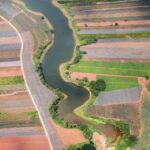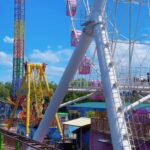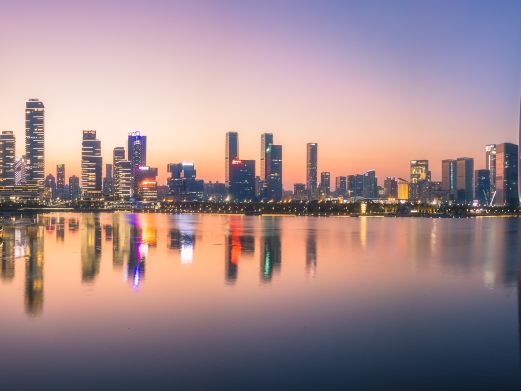The Thai Buddhist Hall is located at the foot of the mountain opposite Huiru Park on Dongshan Road, with the plaque reading ‘Kaiyuan Temple Thai Buddhist Hall’. Thai temples are renowned as museums of Thai art. This building, modeled after Yunshi Temple in Thailand and constructed in the famous city of Chaozhou, is rich in Thai characteristics. It features a multi-tiered, multi-faceted roof with fish-scale tiles and upward-facing yellow patterns on the eaves boards.
The column heads with upturned corners symbolize the auspicious presence of dragons and phoenixes. The decorations on the gable walls and the pointed tops of doors and windows concentrate the ancient Thai sculptural art, fully reflecting the magnificent and exquisite exotic atmosphere. For the people of Chaozhou, it is possible to experience foreign cultures without leaving the country; for overseas Chaozhou residents in Thailand, it holds a special charm.In the center of the hall, a Thai-style Sakyamuni Buddha, known as the Qingla Buddha, is enshrined. Its pointed-top hairstyle is quite different from the Han-Transmission Sakyamuni Buddha in Kaiyuan Temple, featuring a spiral flame decoration. This bronze statue, standing 3 meters tall and weighing 1.5 tons, is gilded with gold foil and is referred to as the Gold Buddha. The walls are adorned with paintings telling the story of Buddha, primarily depicting the birth, enlightenment, and nirvana of Sakyamuni Buddha.
On the east side, there is a Four-Faced Buddha. In Thailand, the Four-Faced Buddha is considered a god, not a Buddha, and is one of the three major deities of ancient Brahmanism, known as Brahma, meaning ‘the Great Brahma’. Thai Chinese commonly refer to it as the ‘Four-Faced Buddha’. ‘The Great Brahma’ is the creator of the five elements of the world, originally having five heads, with one据说 being destroyed by Shiva, leaving four heads facing the four directions and four hands holding the Vedas, lotus, spoon, prayer beads, or bowl. When offering incense to the Four-Faced Buddha, one should light incense in all four cardinal directions and worship clockwise accordingly. The Four-Faced Buddha represents compassion (benevolence), pity (sympathy), joy (auspiciousness), and generosity (charity).
On the hillside of the Thai Buddhist Hall, there are structures such as the ‘River-Viewing Tower’, ‘Continent-Viewing Pavilion’, and ‘Buddhist Pagodas’, with a bell and a drum hanging on each of the two small hills to the east and west. The hall is open all year round from 08:30 to 16:30, with specific business hours subject to the day’s opening status.









